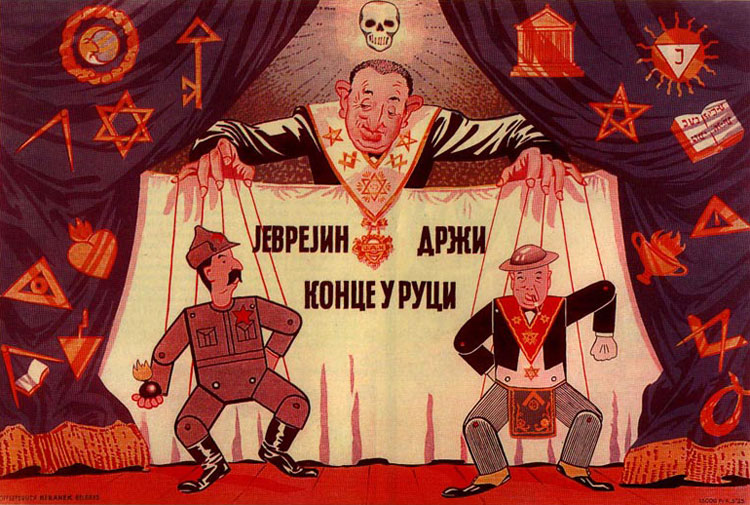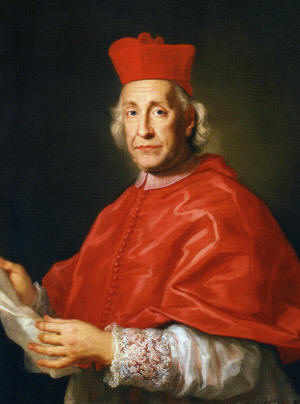|
In Eminenti Apostolatus
''In eminenti apostolatus specula'' is a papal bull issued by Pope Clement XII on 28 April 1738, banning Catholics from becoming Freemasons. It arose from Jacobite-Hanoverian rivalry on the continent. Background Freemasonry had developed in England in the seventeenth century, but after 1715 had split into Jacobite and Hanoverian lodges. The lodge in Rome was Jacobite (pro Stuart) and mainly Catholic, but admitted Protestants, while that in Florence was Protestant Hanoverian but also admitted Catholics and atheists who supported the Whig position. As Clement was from Florence, he did not view a prominent Protestant fraternity in his hometown favorably. James Francis Edward Stuart was living as James III of England in Rome where he conducted a Jacobean court in exile. In 1737 he learned that Hanoverian Freemasons had recruited so many French Catholics that they had taken control of the ''Grande Loge de France'' from the Jacobites. He asked Clement XII to issue a papal bull condem ... [...More Info...] [...Related Items...] OR: [Wikipedia] [Google] [Baidu] |
Order Of The Pug
The Order of the Pug (german: Mops-Orden) was a para-Masonic society founded by Roman Catholics. It is believed that it was founded in 1738 by Klemens August of Bavaria to bypass the crown's ''In eminenti apostolatus'' of 1738. The constitution of the ''Order of the Pug'' allowed women to become members, as long as they were Catholic. The Pug was chosen as a symbol of loyalty, trustworthiness and steadiness. History No reliable information has been handed down about the origins of the pug order. It is believed to have been founded in France around 1740, from whence it spread to the Netherlands and Germany, where a lodge is said to have existed in Bayreuth. The founder is said to have been Klemens August, Duke of Bavaria, in 1740. Members called themselves Mops (the German for Pug). Each lodge had a female and a male lodge master, who called themselves ''grand pugs'' and took turns running the lodge every six months. Other functions, such as secretaries and overseers, were als ... [...More Info...] [...Related Items...] OR: [Wikipedia] [Google] [Baidu] |
18th-century Papal Bulls
The 18th century lasted from January 1, 1701 ( MDCCI) to December 31, 1800 ( MDCCC). During the 18th century, elements of Enlightenment thinking culminated in the American, French, and Haitian Revolutions. During the century, slave trading and human trafficking expanded across the shores of the Atlantic, while declining in Russia, China, and Korea. Revolutions began to challenge the legitimacy of monarchical and aristocratic power structures, including the structures and beliefs that supported slavery. The Industrial Revolution began during mid-century, leading to radical changes in human society and the environment. Western historians have occasionally defined the 18th century otherwise for the purposes of their work. For example, the "short" 18th century may be defined as 1715–1789, denoting the period of time between the death of Louis XIV of France and the start of the French Revolution, with an emphasis on directly interconnected events. To historians who expand the ... [...More Info...] [...Related Items...] OR: [Wikipedia] [Google] [Baidu] |
1738 Works
Events January–March * January 1 – At least 664 African slaves drown, when the Dutch West Indies Company slave ship ''Leusden'' capsizes and sinks in the Maroni River, during its arrival in Surinam. The Dutch crew escapes, and leaves the slaves locked below decks to die. * January 3 – George Frideric Handel's opera ''Faramondo'' is given its first performance. * January 7 – After the Maratha Empire of India wins the Battle of Bhopal over the Jaipur State, Jaipur cedes the Malwa territory to the Maratha in a treaty signed at Doraha. * February 4 – Court Jew Joseph Süß Oppenheimer is executed in Württemberg. * February 11 – Jacques de Vaucanson stages the first demonstration of an early automaton, ''The Flute Player'' at the Hotel de Longueville in Paris, and continues to display it until March 30. * February 20 – Swedish Levant Company founded. * March 28 – Mariner Robert Jenkins presents a pickled ear, which he clai ... [...More Info...] [...Related Items...] OR: [Wikipedia] [Google] [Baidu] |
Catholicism And Freemasonry
The Catholic Church first prohibited Catholics from membership in Masonic organizations and other secret societies in 1738. Since then, at least eleven Papacy, popes have made pronouncements about the incompatibility of Catholic doctrines and Freemasonry. From 1738 until 1983, Catholics who publicly associated with, or publicly supported, Masonic organizations were censured with automatic excommunication. Since 1983, the prohibition on membership exists in a different form. Although there was some confusion about membership following the 1962-1965 Second Vatican Council (Vatican II), the Church continues to prohibit membership in Freemasonry because it believes that Masonic principles and rituals are irreconcilable with Catholic doctrines. The current norm, the 1983 Congregation for the Doctrine of the Faith's (CDF) ''Declaration on Masonic associations'', states that "faithful who enroll in Masonic associations are in a state of grave sin and may not receive Holy Communion" and me ... [...More Info...] [...Related Items...] OR: [Wikipedia] [Google] [Baidu] |
Clarification Concerning Status Of Catholics Becoming Freemasons
The Declaration Concerning Status of Catholics Becoming Freemasons is a February 1981 declaration by the Congregation for the Doctrine of the Faith under Cardinal Franjo Šeper which restated the Catholic Church's prohibition against Catholics becoming Freemasons. It contains three points of "confirmation and clarification" about "erroneous and tendentious interpretations" of a leaked 1974 private clarification, on interpretation of 1917 Code of Canon Law canon 2335, from the to episcopal conferences: #"canonical discipline remains in full force and has not been modified in any way" #"neither the excommunication nor the other penalties envisaged have been abrogated" #the intention of the 1974 letter was to remind about "the general principles of interpretation of penal laws for the solution of the cases of individual persons which may be submitted to the judgment of ordinaries" and not "to permit Episcopal Conferences to issue public pronouncements by way of a judgment of a general ... [...More Info...] [...Related Items...] OR: [Wikipedia] [Google] [Baidu] |
Papal Ban On Freemasonry
The Catholic Church first prohibited Catholics from membership in Masonic organizations and other secret societies in 1738. Since then, at least eleven popes have made pronouncements about the incompatibility of Catholic doctrines and Freemasonry. From 1738 until 1983, Catholics who publicly associated with, or publicly supported, Masonic organizations were censured with automatic excommunication. Since 1983, the prohibition on membership exists in a different form. Although there was some confusion about membership following the 1962-1965 Second Vatican Council (Vatican II), the Church continues to prohibit membership in Freemasonry because it believes that Masonic principles and rituals are irreconcilable with Catholic doctrines. The current norm, the 1983 Congregation for the Doctrine of the Faith's (CDF) '' Declaration on Masonic associations'', states that "faithful who enroll in Masonic associations are in a state of grave sin and may not receive Holy Communion" and membershi ... [...More Info...] [...Related Items...] OR: [Wikipedia] [Google] [Baidu] |
Christianity And Freemasonry
While many Christian denominations either allow or take no stance on their members joining Freemasonry, others discourage or prohibit their members from joining the fraternity. Catholic Church The Roman Catholic Church has been among the most persistent critics of Freemasonry. The Church has prohibited its members from being Freemasons since the papal bull titled ''In eminenti apostolatus,'' promulgated in 1738 by Pope Clement XII. Since then, the Vatican has issued several papal bulls banning membership of Catholics from Freemasonry under threat of excommunication. In 1983, the Canon Law was changed to read, "A person who joins an association which plots against the Church is to be punished with a just penalty; however, a person who promotes or directs an association of this kind is to be punished with an interdict", eliminating the penalty of excommunication for Masons. Joseph Ratzinger, who later became Pope Benedict XVI, wrote in a letter that those who enroll in Masoni ... [...More Info...] [...Related Items...] OR: [Wikipedia] [Google] [Baidu] |
Anti-Masonry
Anti-Masonry (alternatively called anti-Freemasonry) is "avowed opposition to Freemasonry",''Oxford English Dictionary'' (1979 ed.), p. 369. which has led to multiple forms of religious discrimination, violent persecution, and suppression in some countries as well as in various organized religions (primarily Abrahamic religions). However, there is no homogeneous anti-Masonic movement. Anti-Masonry consists of radically differing criticisms from frequently incompatible political institutions and organized religions that oppose each other, and are hostile to Freemasonry in some form. Early anti-Masonic documents The earliest anti-Masonic document was a leaflet which was printed in 1698 by a Presbyterian minister who was named Winter. It reads: TO ALL GODLY PEOPLE, In the Citie of London. Having thought it needful to warn you of the Mischiefs and Evils practiced in the Sight of God by those called Freed Masons, I say take Care lest their Ceremonies and secret Swearings take hold ... [...More Info...] [...Related Items...] OR: [Wikipedia] [Google] [Baidu] |
Papal Documents Relating To Freemasonry
There are many papal pronouncements against Freemasonry Freemasonry or Masonry refers to fraternal organisations that trace their origins to the local guilds of stonemasons that, from the end of the 13th century, regulated the qualifications of stonemasons and their interaction with authorities ...; the most prominent include: Before Pius IX *. *. *. *. *. *. *. Pius IX *. *. *. *. *. *. Leo XIII *. *. *. *. *. * *. *. Notes References * * {{Refend Catholicism and Freemasonry Documents of the Catholic Church ... [...More Info...] [...Related Items...] OR: [Wikipedia] [Google] [Baidu] |
Congregation For The Doctrine Of The Faith
The Dicastery for the Doctrine of the Faith (DDF) is the oldest among the departments of the Roman Curia. Its seat is the Palace of the Holy Office in Rome. It was founded to defend the Catholic Church from Heresy in Christianity, heresy and is the body responsible for promulgating and defending Roman Catholic doctrine. Formerly known as the ''Supreme Sacred Congregation of the Roman and Universal Inquisition''; (1908 — 1965) the ''Supreme Sacred Congregation of the Holy Office''; and then until June 2022 the ''Congregation for the Doctrine of the Faith'' (''CDF''; la, Congregatio pro Doctrina Fidei). It is still informally known as the Holy Office in many Catholic countries. ( la, Sanctum Officium) Founded by Pope Paul III in 1542, the sole objective of the dicastery is to "spread sound Catholic theology, Catholic doctrine and defend those points of Christian tradition which seem in danger because of new and unacceptable doctrines." Its headquarters are at the Palace of ... [...More Info...] [...Related Items...] OR: [Wikipedia] [Google] [Baidu] |
Pope Clement XII
Pope Clement XII ( la, Clemens XII; it, Clemente XII; 7 April 16526 February 1740), born Lorenzo Corsini, was head of the Catholic Church and ruler of the Papal States from 12 July 1730 to his death in February 1740. Clement presided over the growth of a surplus in the papal finances. He thus became known for building the new façade of the Basilica of Saint John Lateran, beginning construction of the Trevi Fountain, and the purchase of Cardinal Alessandro Albani's collection of antiquities for the papal gallery. In his 1738 bull , he provides the first public papal condemnation of Freemasonry. Early life Lorenzo Corsini was born in Florence in 1652 as the son of Bartolomeo Corsini, Marquis of Casigliano and his wife Elisabetta Strozzi, the sister of the Duke of Bagnuolo. Both of his parents belonged to the old Florentine nobility. He was a distant relative of Saint Andrea Corsini. Corsini studied at the Jesuit Collegio Romano in Rome and also at the University of Pisa whe ... [...More Info...] [...Related Items...] OR: [Wikipedia] [Google] [Baidu] |


.jpg)


